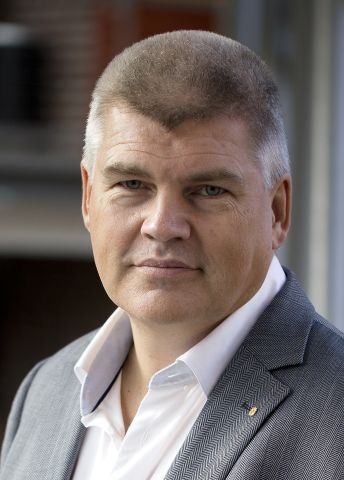
Per Delsing
Professor of Experimental Physics
Wallenberg Scholar
Institution:
Chalmers University of Technology
Research field:
Quantum physics with nano components

Wallenberg Scholar
Institution:
Chalmers University of Technology
Research field:
Quantum physics with nano components
The weird and wonderful world of quantum physics has always been at the heart of Delsing’s research. Here, at atomic scale and smaller, laws apply that fly in the face of human intuition. Particles can be in two places at once, slipping through barriers like ghosts, or influencing each other at a distance without any discernible contact between them.
Delsing is driven by an abiding curiosity. He is a professor of experimental physics at Chalmers University of Technology, and is helping to fill in the gaps in the map explaining the workings of quantum physics.
“The most enjoyable part of my work is when I understand something quite new, or am the first person to demonstrate a phenomenon predicted by the theory but never seen before.”
His main tools are electronic chips with minimal circuits that are cooled to temperatures so low they become superconducting – conducting current without any resistance at all. This allows the laws of quantum physics to come into play and be studied. The superconducting circuits are designed in different ways, enabling the researchers to control what they want to study. For instance, the circuits can be designed to behave exactly like an atom – an artificial atom.
Delsing spent many years researching how particles of light – photons – behave and can be controlled. One milestone was when his research team succeeded in creating light from a vacuum. In everyday life a vacuum is usually seen as an empty space, but the principles of quantum physics dictate that vacuum is brimming over with virtual particles, that is, particles that suddenly appear from nowhere only to instantly disappear again. The research team managed to convert those virtual particles of light into normal photons – a feat that made the list of the year’s most important breakthroughs published in the periodical Physics World.
But one day Delsing and his team stumbled upon a new discovery. The research team had made an unsuccessful attempt to build a new kind of light sensor, and in doing so had found they could measure sound waves on surfaces, known as surface acoustic waves, with a very high degree of accuracy. This spurred them on to explore sound at the quantum level.
Atoms are normally happy to interact with light. They absorb or emit photons when they move between their different energy states. Delsing’s research team then began to examine whether they could get their artificial atoms to absorb and emit minimal sounds instead. They succeeded, opening the door to a new, unexplored branch of quantum physics – quantum acoustics.
“It was like finding a patch of blueberries where no one had been before, with loads of berries ripe for picking.”
He immediately drew up a list of ten experiments for the team to carry out, such as steering sound particles over a chip, and creating the fundamental conditions needed for a sound laser. Some of them have already been done – by the team itself or by other research teams tempted into the new field. The extension of the Wallenberg Scholar grant means that Delsing can now continue to map the unknown domains of quantum acoustics.
“I am grateful for this acknowledgement and the honor of being a Wallenberg Scholar. And I know that the scientific community appreciates that the Wallenberg foundation has made such a substantial financial commitment to research and to individual researchers. All research is based on ideas, and those ideas come from individuals.”
Up to now, Delsing’s research has been curiosity driven, without aiming at specific benefits. But history offers numerous examples of basic research that later turned out to be of enormous utility. He himself has experienced how the artificial atoms he has long worked on and refined in basic research turned out to offer promise as building blocks for quantum computers. He is now leading the largest Swedish initiative to build a working quantum computer at the Wallenberg Centre for Quantum Technology.
“In building the quantum computer, our role is that of quantum engineers applying existing knowledge in the best way to create benefit. But we are also developing measuring and sample fabrication techniques that will be of use to us in basic research.”
He can envision quantum acoustics also eventually finding applications in quantum computers. Sound travels much more slowly than light, which means there is time to manipulate sound signals while they are passing over a chip. Moreover, the sound’s wavelength is short enough to be comparable with the size of the artificial atoms. This opens up the possibility of equipping the atoms with an antenna and tailoring the sound they emit – their direction and frequency. Use of antennas also enables the scientists to link the atoms very strongly to sound.
Delsing’s next move will be to explore what happens when the link between atom and sound is really strong. He is also planning to return to the simmering cauldron of vacuum. It is known that light particles that appear and disappear in a vacuum cause a slight shift in the energy levels of atoms. This discovery was awarded the Nobel Prize in 1955. Now he wants to find out whether the same applies to sound.
“Deciding what I should study next is actually my biggest challenge at the moment. We opened a new door in quantum physics, and there is so much to explore.”
Text Ingela Roos
Translation Maxwell Arding
Photo portrait Peter Widing, others Chalmers University of Technology